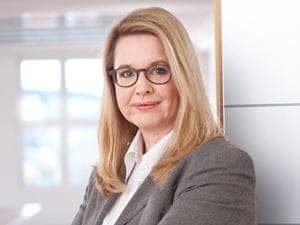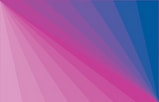RecommendMail Facebook LinkedIn
- Digitization
Video mapping for “More Light” in the city of lights, Jena
The Ernst Abbe high-rise building in Jena is immersed in light on selected evenings. The light effects are both in 2D and 3D and come from state-of-the-art laser beamers whose light is precisely aligned to the building. These effects are also known as video mapping. How does such a system actually work?
, Katrin LauterbachVideo mapping is a combination of imaging and mapping. That’s right – because video projections are precisely assigned to a specific surface during video mapping. This allows the projections to cover a surface structure like a living shell, giving the viewer the feeling of a newly created reality. The basis for 3D video mapping is a 3D model of the surface structure onto which the images are projected. Building facades, in particular, are suitable projection objects.
For a projector to be able to illuminate and project precisely, an exact surface must be prepared beforehand. This is done using mapping software. The use of a custom-fit template is the basic requirement for video mapping and the main difference from conventional projections. With conventional 2D images, buildings can be illuminated, and colors and shapes can be depicted on the building. However, nothing moves.
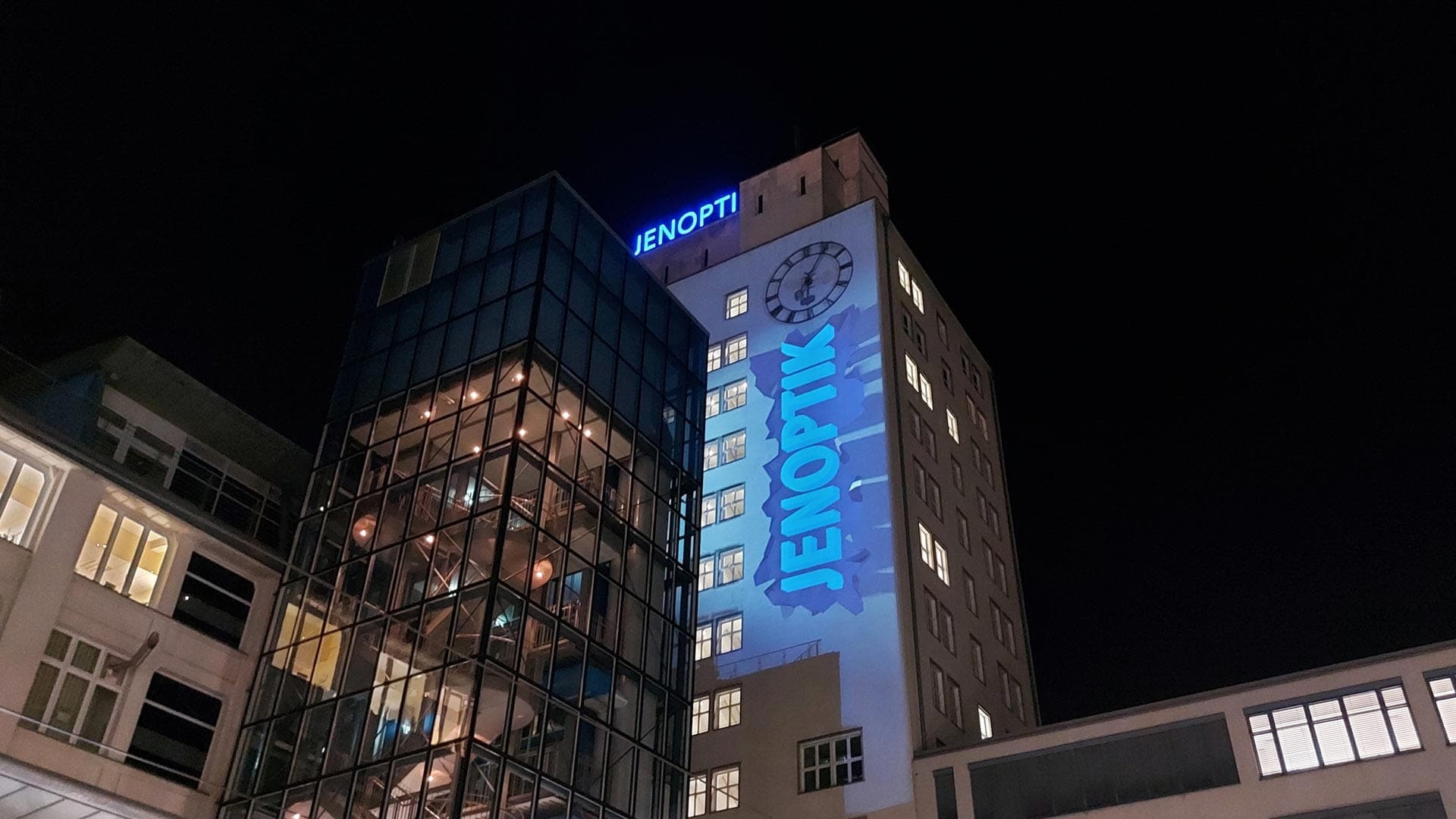
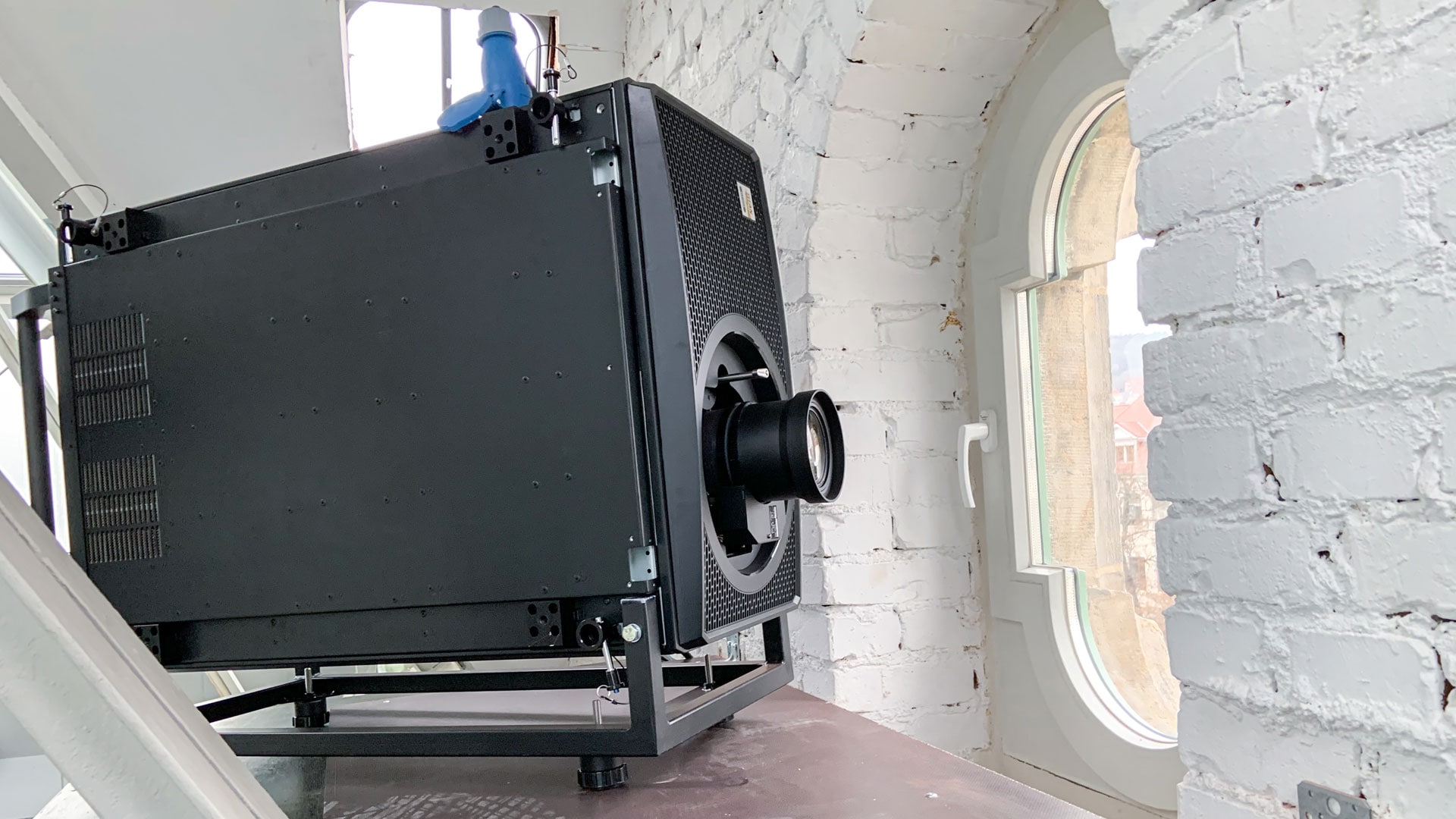
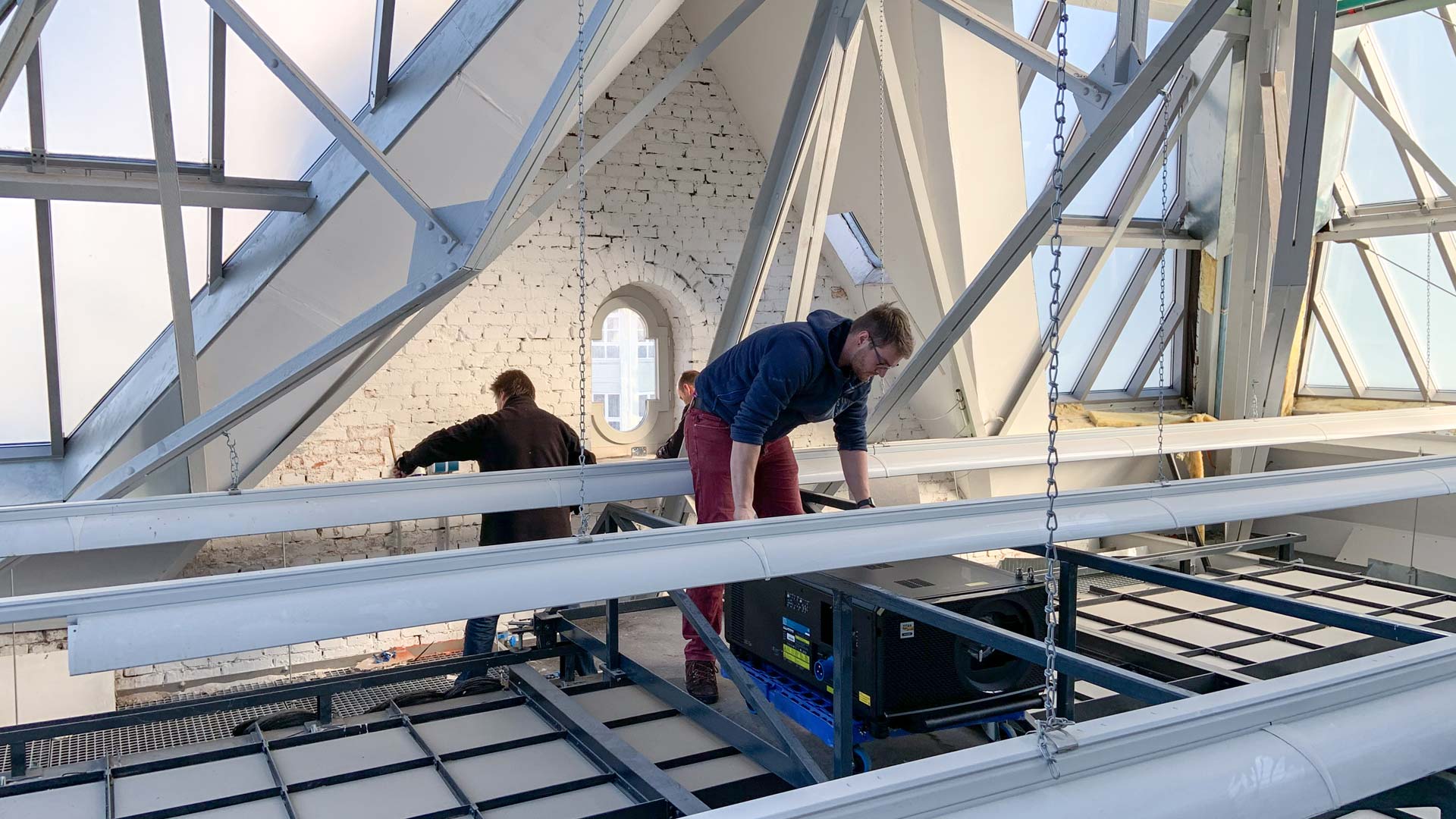
Large-area video mapping with powerful lasers
- Projection surface of the facade towards Volkshaus: approx. 40 m x 24 m = 960m2
- Projection route from Volkshaus to Ernst Abbe high-rise building: approx. 82 m
- Projection surface of the facade towards building 15: approx. 25 m x 25 m = 625 m2
- Projection route from Building 15 to the Ernst Abbe high-rise building: approx. 120 m
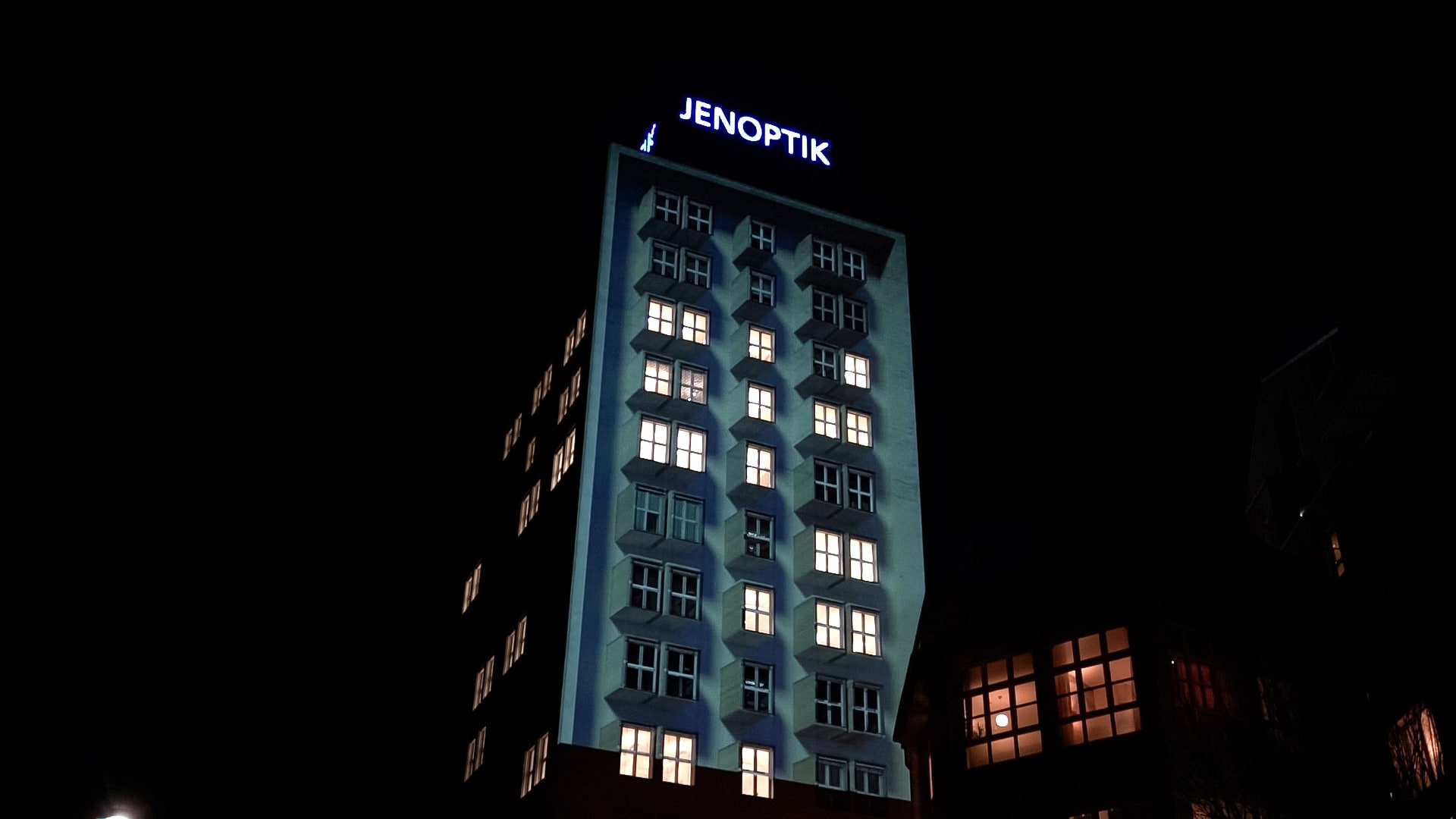
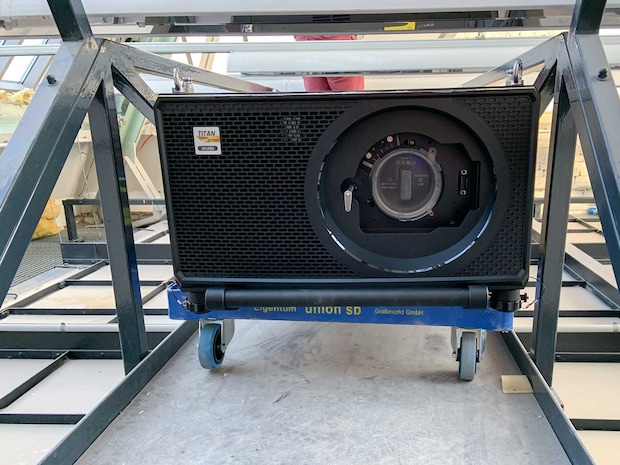
The TITAN 37000 WUXGA laser projector is a bright and powerful 3-chip digital laser projector. It delivers 37,000 lumens from a compact housing, making it suitable for large outdoor projections.
WUXGA stands for Wide Ultra Extended Graphics Array, which translates to a vertically-enhanced Full HD resolution. This would actually represent 1920×1080 pixels in a ratio of 16:9. However, the expansion of the screen in WUXGA resolution makes it 1920x1200 pixels, i.e., 230,400 pixels more. Additionally, “constant brightness control” and DMX Art-Net enable brilliant results.
The projector is also equipped with “Non-Linear warp” (projection on curved surfaces), image-in-picture, geometry correction (projection at an angle onto objects, making edges appear straight) and edge blending. Behind it lies enormous computing power, which ensures that no light shines past the building and that the projection ends exactly at the edges.
The speed of movement of the projected images determined by the content is subject to legal regulations to prevent flickering and strobe effects.
- 37,000 lumens
- 18,000:1 contrast
- WUXGA resolution
- sealed optics (IP60 encapsulated)
- Laser light sources (approx. 20,000 h service life)
- Edge Blending
- Geometry correction
- Weight: 105 kg (without lens)
Light artists make the facade shine
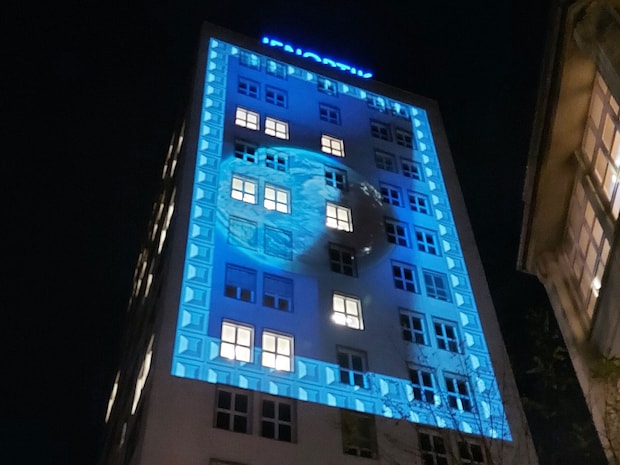
The technology and installation are only a part of the story; the actual art, itself, is created by an artist who brings light acrobats onto the building. For the current shows, Jenoptik is working with Saxon light artist Rico Meier, who thinks about the scenes and effects and implements them graphically and arithmetically. His dancing Santas, the flashing window lights and the “driving windows” are just some of the mapping sequences that have already been shown and loved.
The facade elements and the view of the Ernst Abbe high-rise building are thus included via the pure projection so that the projection and facade combine to create a realistic image fiction. The creation of three-dimensional effects and the interaction with the facade of the high-rise building stand for the idea of immersion and the creation of a virtual reality in public urban areas.
International Day of Light #IDL
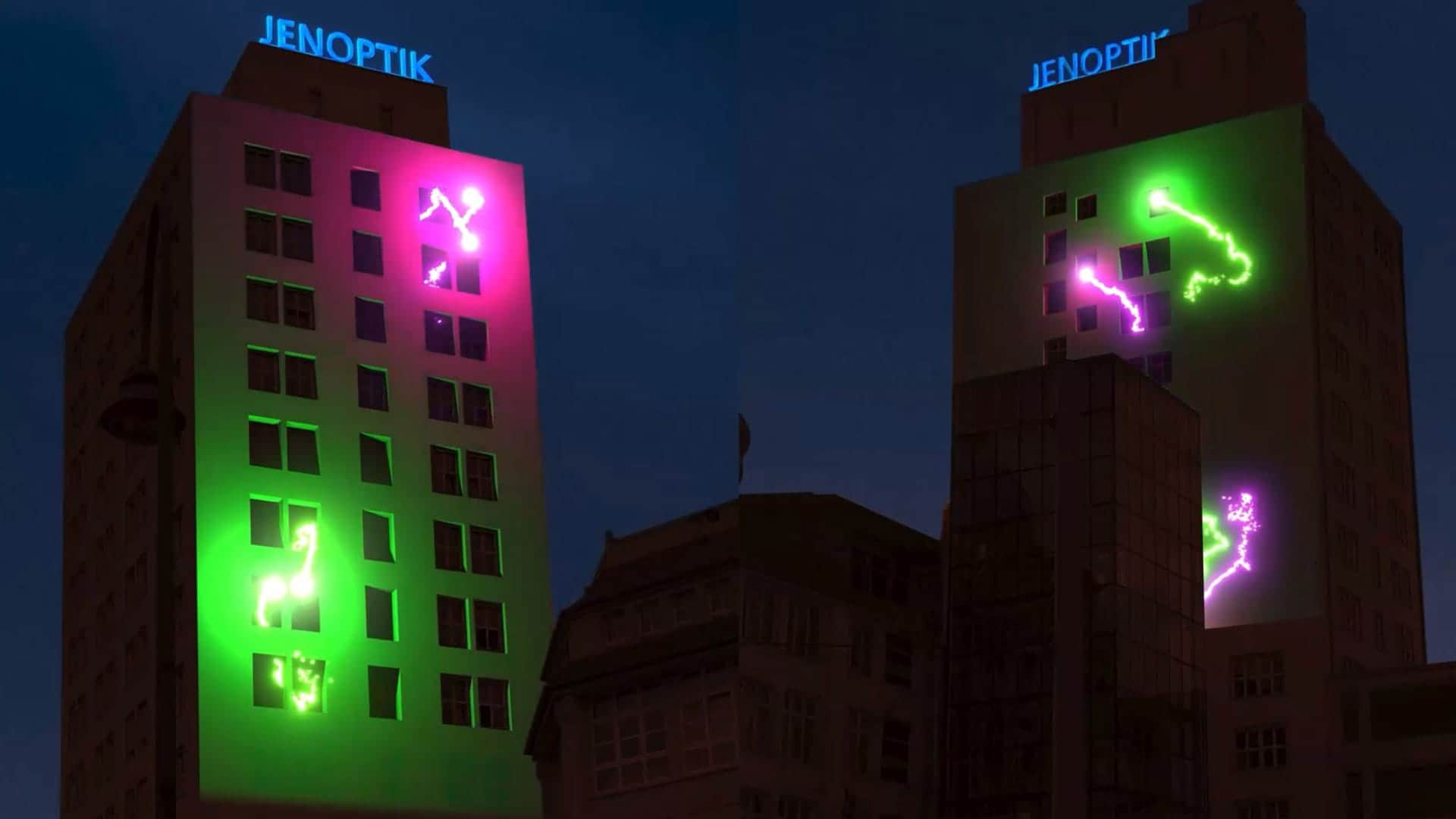
2022 Night of Science in Jena (©WE ARE VIDEO)
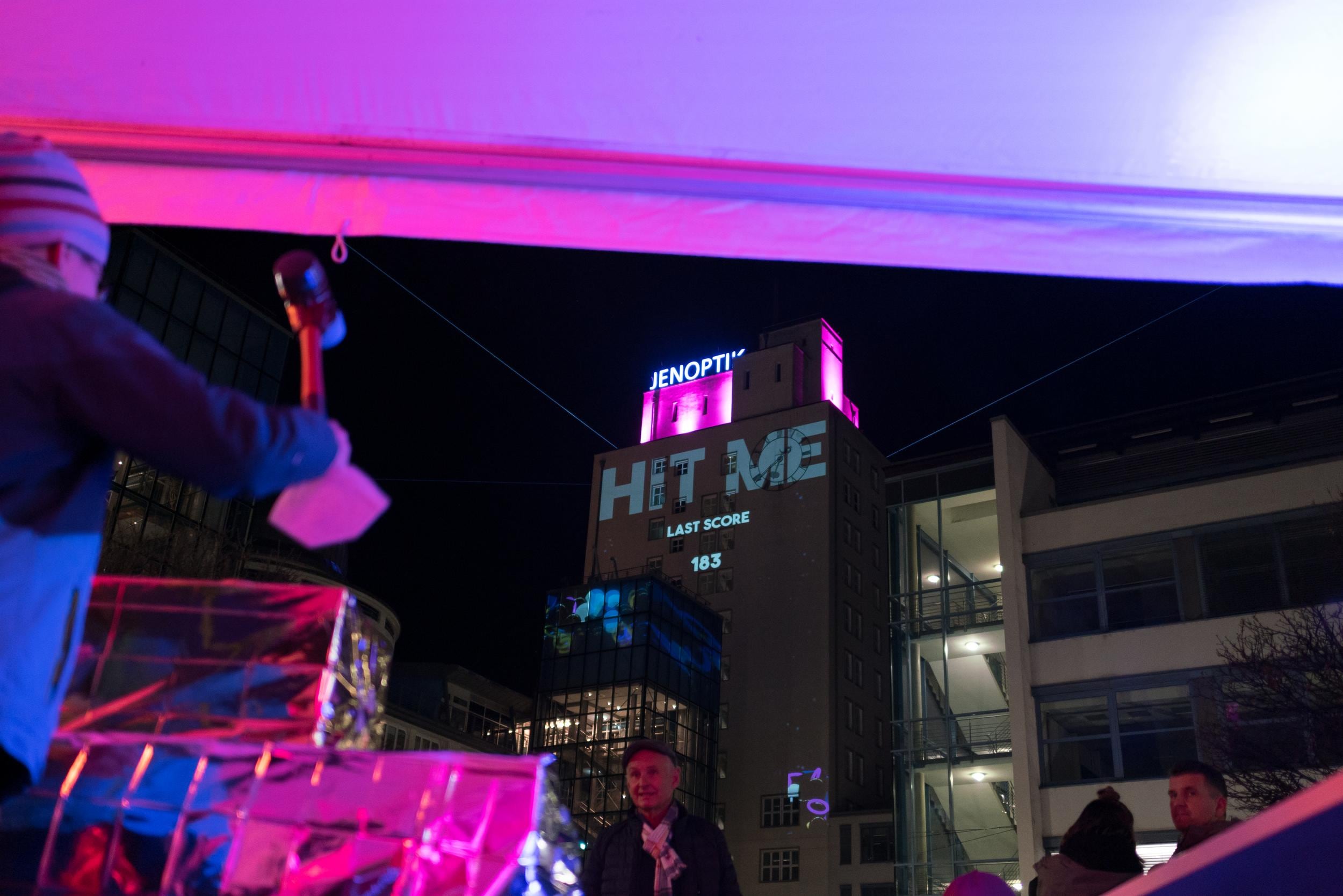
About Katrin Lauterbach
Katrin Lauterbach is part of Jenoptik’s Corporate Communications and Marketing department. As a qualified journalist, she has always had an aptitude for writing, among other skills. She is passionate about translating technology and business into understandable texts. After her internship and business studies, she started at Jenoptik in 2000, then worked for Bosch and Sparkasse, a German bank group, and ultimately returned to Jenoptik in 2016. The focus of her work is currently the expansion of digital media.
